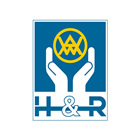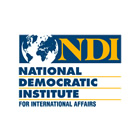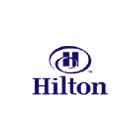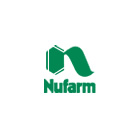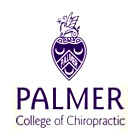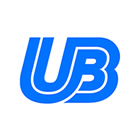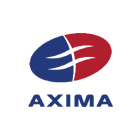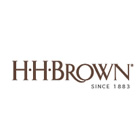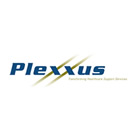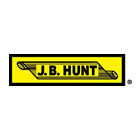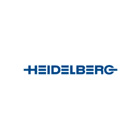
Data Backup Devices
Author: Swapna Naraharisetty, 2BrightSparks Pte. Ltd.
Data Backup is essential for every organization to perform their core business functions and to keep the business running in the event of a hardware failure or natural disasters.
When you decide to back up your data, the first thing to choose is the storage device or backup media to use for your backups. There are many data storage devices in the market such as tape drives, optical drives, SD cards, hard disk drives and cloud storage services. Selecting the right backup storage device is therefore a vital aspect of any backup job.
This article mainly focusses on different data storage devices and important points to consider when using them.
Tape - reliability
The main advantage of using tape drives is they are reliable storage devices as data stored on the tape drives can be read securely even after decades of storage. Because of this, many enterprises (or large businesses) use tape drives as their main backup system. In addition, tape drives can be easily removed and stored offsite, so the data stored on it is protected from any hardware failures, corruption, theft, or natural disasters.
Although tape backups are viable, they are slow and expensive. As tapes are sequential access devices, finding and restoring individual files can be slow and troublesome. Thus, tape drives are mainly used for archival purposes to store data that is not changed or accessed frequently.
Optical Storage - price and portability
Optical discs (CDs, DVDs and Blu-ray) are popular storage devices for home users. They are commonly used for system backup and restore as they are inexpensive and portable. Data on optical disc is read and written via a laser, so there is less wear & tear during read/write process.
However, optical discs are more prone to damage or scratches, and the data on the disc may become unreadable very easily. Optical discs require special hardware/software to read and write, and this may be a problem if your laptops or desktop PCs don’t have an optical drive or it does not support all drive formats.
SD Cards - compact and portable
SD cards, or memory cards, are small storage devices that are used to backup documents, pictures, video, or audio files. The advantages of using SD cards are they are compact, portable and provide easy access to data. They are widely used to save small amount of data on mobile phones, cameras, and computers.
SD cards are more expensive than hard disks, CD or DVDs. In addition, SD cards can break easily, and you may lose data stored on it.
Flash Drives - price and ease of use
A Flash Drive is a plug-and-play portable storage device that uses non-volatile memory to store data. It is very easy to store, retrieve and manage data on a flash drive. The main purpose of flash drive is to carry and transfer files from one device to another.
However, if you use the flash drive with different computers then you may spread viruses from one computer to another and infect the files stored on it. Therefore, it is important to use antivirus software to scan the flash drive before opening it. And always keep multiple backup copies of your important files (e.g. on an external drive, cloud, etc.) to prevent data loss.
Hard Drive and SSD - price and capacity
Hard disk drives (HDD) are the most popular data storage devices for home and business users. Hard drives are portable and affordable storage devices. They are available in different shapes and sizes with storage capacities ranging from megabytes to terabytes. You can easily connect a HDD to your computer and backup files to it.
Drawbacks of HDDs are they can be damaged, broken or crashed easily. So extra caution is necessary when using hard disks for backups. Most of the hard drives do not support password protection, so if your hard drive is lost or stolen, your information is available to anyone who has access to it.
Solid State Drive (SSD) is another storage device which is replacing hard disk drives. SSD's are much faster, more durable, and reliable than HDD's. However, SSD's are more expensive (although costs are decreasing) and the device cost can increase considerably with the storage capacity.
Network Drive or NAS Drive - capacity
Network Drives (Network Attached Storage Drives) are high capacity storage devices that are directly connected to a network to provide storage for multiple computers or devices.
With NAS drives, you can easily share files with others and access them from several devices over the network. Thus, small businesses and home users use NAS drives for data storage.
There are a few limitations of NAS drives. As the data transfer is carried out over the network, the performance may be affected if users are copying large files to and from the NAS. NAS functionality depends mainly on its firmware. Some NAS devices are released with early build of firmware that contain undiscovered bugs, which can cause problems when storing data. Therefore, you need to check the manufacturers website to see if a newer firmware is available and upgrade the firmware before using it.
Offsite Storage Services (Cloud, FTP, etc.) - accessibility and location
Cloud Storage Services, or FTP Servers, allow users to store files remotely on an offsite location and protect them from viruses, hackers, and disasters. In the early 90’s, FTP was widely used to transfer large files to a remote server. Even today, some businesses use FTP, FTPS or SFTP servers for their offsite backup.
One limitations of FTP is that you need an FTP client (or compatible backup software) to backup or restore files stored on the server. Configuring an FTP server can be a complex and time-consuming process when you need to open additional ports or configure firewall or router to transfer files to/from the server. Because of this, many business users are moving to cloud storage for online data storage.
One of the greatest advantages of using cloud storage is that it provides a convenient way to access data from anywhere in the world with an internet connection. The second biggest advantage is cloud services offer enormous storage space at affordable prices. Therefore, cloud storage reduces the cost and resources of your company. However, the operational cost may increase, or data transfer is throttled if the bandwidth usage exceeds a specified limit provided by the cloud service.
Conclusion
Ultimately, the data backup device you choose depends on the amount of data you need to store, backup speed, cost, security, reliability and availability of data. We recommend keeping both onsite and offsite backups to protect from primary data loss and corruption.
With SyncBackPro, you can backup files to HDD, SSD, SD cards, external drive, NAS drives, FTP server and numerous Cloud services such as Amazon S3™, Google Storage™, Google Drive™, Microsoft Azure™, Microsoft OneDrive™, OneDrive for Business (Office 365), SharePoint™ (Office 365), Dropbox™, Box, SugarSync™, OpenStack, Backblaze™ B2, OVH™, Egnyte™ and WebDAV servers.
Noted Customers
© 2003-2025 2BrightSparks Pte. Ltd. | Home | Support | Privacy | Terms | Affiliate Program

